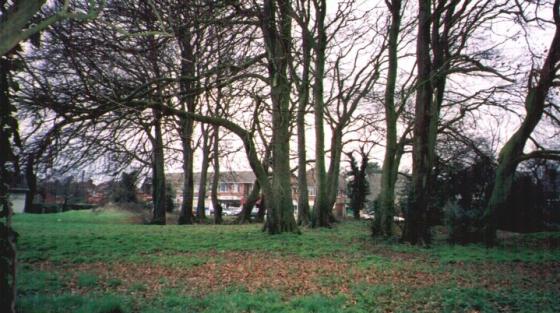A saucer barrow, a disc barrow, and a bowl barrow, all arranged in a compact triangle. And then someone dug a forestry track through the middle of them at some point between the 1930s and the 1970s. Nice one. The arrangement is very unusual and definitely worth a visit I thought. Well, I didn’t make it. They are well inside private woodland and although I decided to strike out for them for some guerilla photography along the track which actually bisects the barrows, I got spooked. I’m not one for that sort of thing (I’m a statistician you know!) and I usually feel at home in dense woodland but somehow it felt really hostile in there. When I hit a fence not marked on the maps, I legged it back the way I came as fast as I could.
Sites within 20km of Crawley Clump East Barrows
-

Crawley Clump West Barrows
photo 1description 3 -

South Wonston South-west Long Barrow
photo 3description 2 -

Littleton House Bowl Barrow
photo 1description 1 -
Barton Stacey Barrows
description 1 -
Moody’s Down
description 2 -

South Wonston North Long Barrow
photo 1description 2 -

South Wonston Long Barrow
photo 4description 2 -
Moody’s Down Farm
description 2 -

South Wonston East Long Barrow
photo 1description 1 -
Chilbolton Down Long Barrow
description 1 -
Newton Down Farm
description 2 -
Chilbolton Round Barrows
description 1 -

Wallers Ash Barrow
photo 1description 1 -
Leckford Barrows
description 1 -

Flowerdown Barrows
photo 10description 5 -
Heardulfes Hlaewe
description 1 -
Little Somborne Hillfort
description 1 -
New Farm
description 1 -
Kitson’s Clumps
description 1 -

Norsebury Ring
photo 2description 3 -

Woolbury
photo 9description 2 -

Andyke
photo 3description 1 -

Tidbury Ring
photo 4description 1 -

Oram’s Arbour
photo 2 -

Stockbridge Down
photo 1description 1 -

West Wood
photo 6description 1 -
Cranbourne Wood Long Barrow
description 1 -

Farley Mount Enclosure
photo 7description 2 -

Withering Corner Barrows.
photo 4description 2 -

Oliver’s Battery
photo 4description 3 -

Micheldever Woods
photo 10description 2link 1 -

Magdalen Hill Down Barrows
photo 7description 4 -

Texas Barrows
photo 3description 2 -

St Catherine’s Hill
photo 15description 7 -

Merdon Castle
photo 1description 1 -

Dirty Mount
photo 3description 1 -
Freefolk Wood Barrows
description 1 -
Three Barrows (Laverstoke)
description 1 -
Waters Down Farm
description 1 -
Danebury Round Barrows
description 1 -

Popham Beacons
photo 7description 3 -

Telegraph Hill Barrow
photo 6description 1 -

Itchen Stoke Down Barrows
photo 1description 1 -

Cheesefoot Head Barrows
photo 3description 1 -

St Mary’s Church, Twyford
photo 3description 1link 1 -

Danebury Long Barrows
photo 5description 2 -

Danebury
photo 28description 11link 4 -
Danebury North-East long barrow
description 1 -

Bury Hill
photo 18description 2 -

Balksbury
photo 2description 2 -

Twyford Pumping Station Barrows
photo 2description 1 -

Love Lane
photo 2description 1 -

Abra Barrow
photo 2description 2 -

Oliver’s Battery
photo 1description 2 -

Gander Down
photo 1description 1 -

Longwood House Long Barrow
photo 5description 1 -

Owslebury
photo 4description 2 -

Whiteshoot Hill
photo 1description 1 -

The Turret
photo 1description 1 -

Cheriton Church Mound
photo 3description 1 -
Weyhill
description 2 -
Angle Down Barrow
description 3 -

Cheriton Long Barrow
photo 5description 2 -
Lamborough
description 2 -
Lockerley Camp
description 1 -

The Millbarrows
photo 3description 2 -
Hinton Ampner Park
description 1 -
Suddern
description 1 -
Upper Woodcott Farm
description 2 -

Kilmeston
photo 1description 2 -

Ashleys Copse
photo 1description 1 -

Dunwood Camp
photo 1description 1 -

Toothill Fort
photo 2description 2 -

Quarley Hill
photo 2description 3 -
Martin’s Clump Mine
description 1 -

Seven Barrows
photo 5description 4 -
Martin’s Clump
description 2 -

Chilworth Ring
photo 1description 1